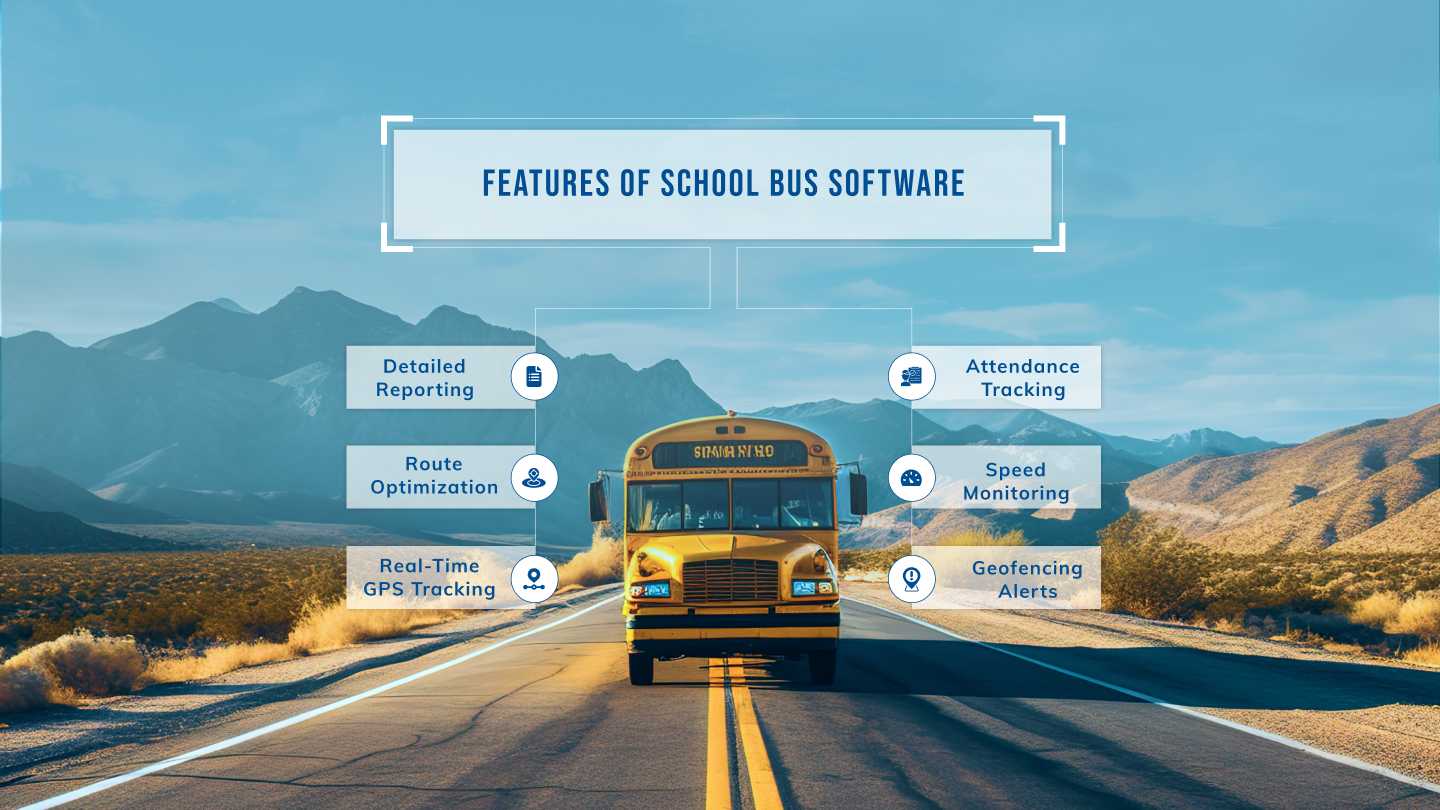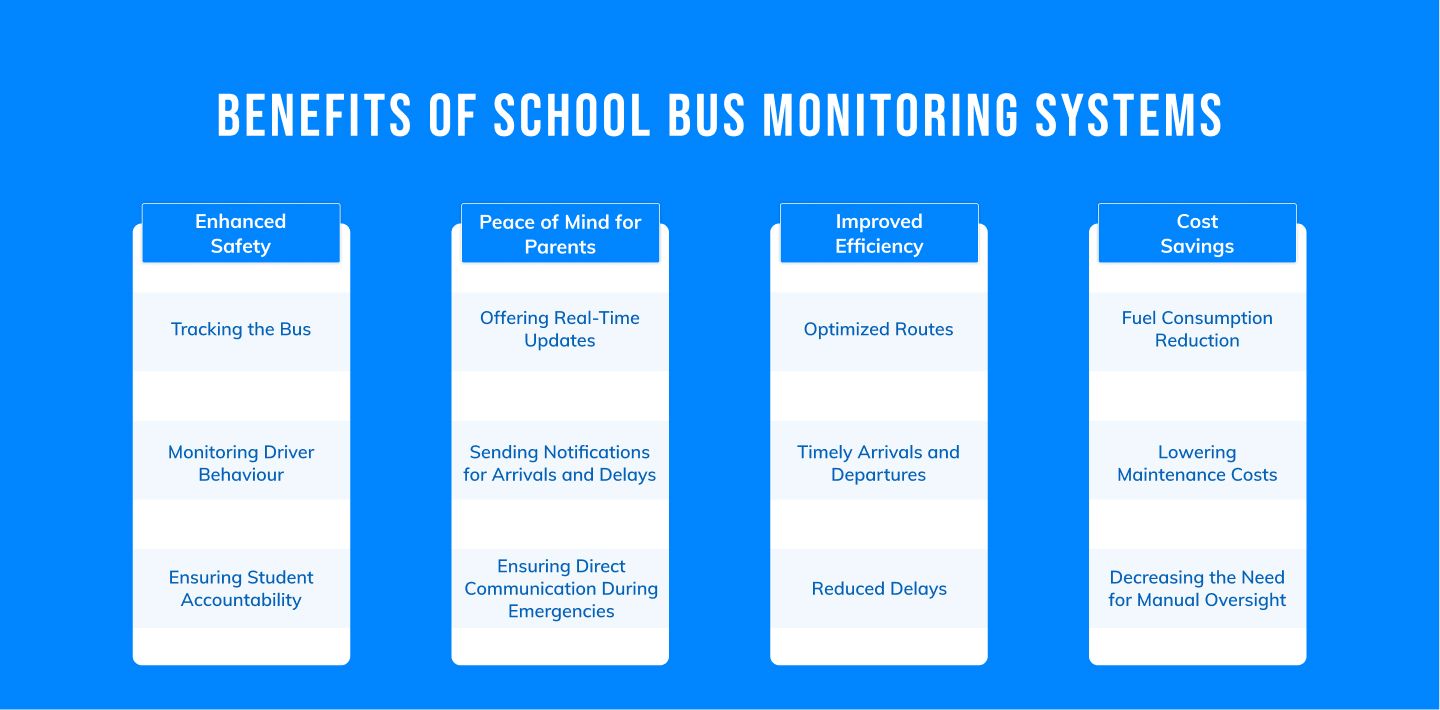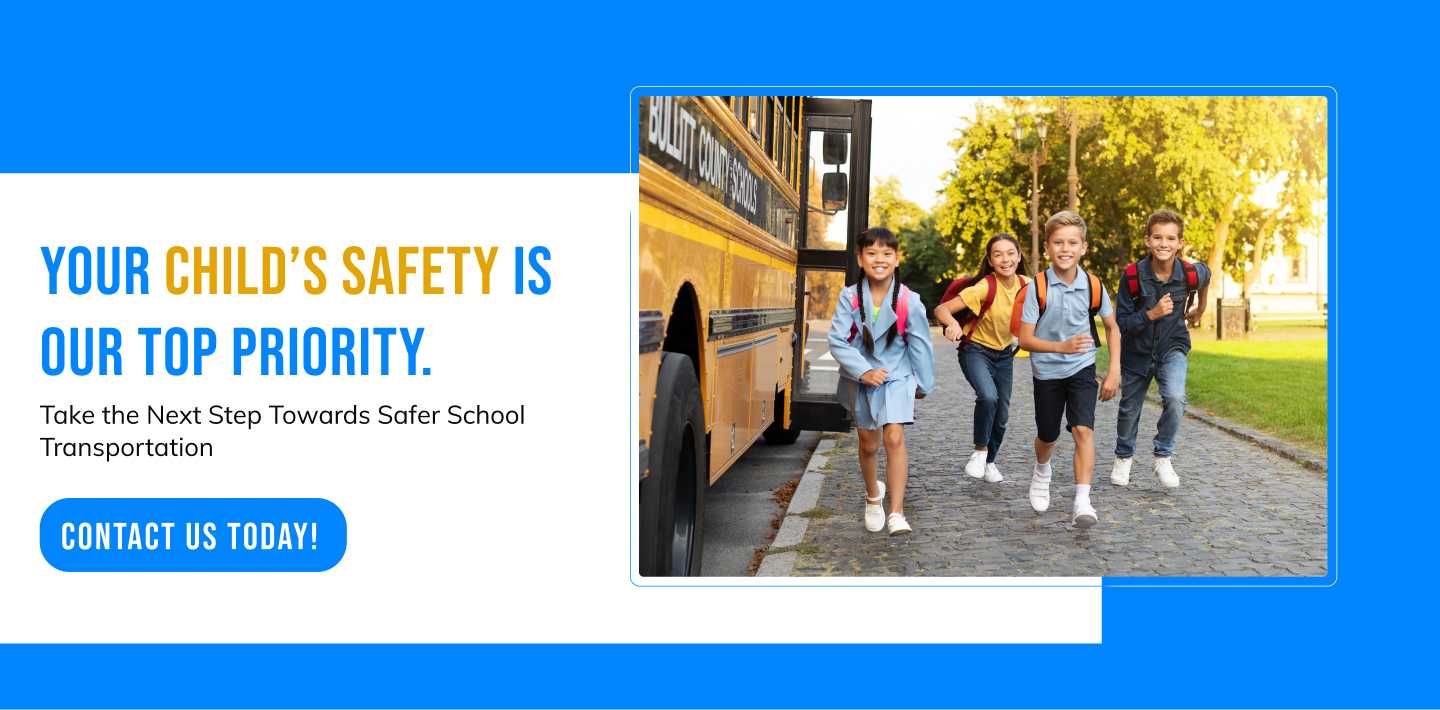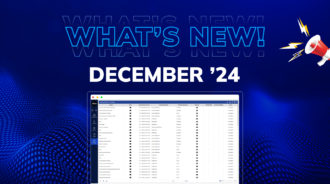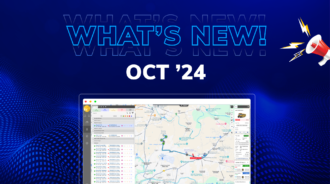School Bus Monitoring System: Top Features to Look For
Imagine Sarah, a working mom with two children. Every day, she worries about her kids’ safety on the bus. One day, her son’s bus arrived late, causing panic and multiple calls to the school. This incident made her realize the need for a better system. She wasn’t alone. Many parents and schools face similar issues. The solution? A robust school bus monitoring system.
Sarah’s experience pushed her to research better solutions. She discovered school bus monitoring systems that promised to address all her concerns. But what exactly should one look for in a school bus monitoring system?
Key Features of a School Bus Monitoring System
1. Real-Time GPS Tracking
Real-time GPS tracking is one of the most crucial features of a school bus monitoring system. It allows parents and schools to see the exact location of the bus. This feature helps to:
– Reduce Stress: Parents can check the real-time location of the bus, which reduces anxiety about when it will arrive at the stop or school.
– Improve Route Efficiency: Real-time tracking allows for adjustments to avoid traffic and roadblocks, ensuring the bus follows the quickest and safest route.
– Ensure Route Compliance: Schools can monitor the bus to ensure it stays on the designated route, improving safety and accountability.
2. Live Notifications
Live notifications keep parents informed about the bus’s status. Benefits include:
– Arrival and Delay Alerts: Parents receive alerts when the bus is approaching their stop and if there are any delays, keeping them informed and prepared.
– Emergency Communication: Immediate notifications can be sent during emergencies, ensuring parents are quickly informed of any incidents.
– Peace of Mind: Knowing they will be promptly notified of any changes or issues provides parents with peace of mind.
3. Driver Behavior Monitoring
Monitoring driver behavior is crucial for safety. This feature can:
– Track Speed and Driving Patterns: Schools can monitor the speed of the bus and driver behavior, such as harsh braking or rapid acceleration, to ensure safe driving practices.
– Identify and Address Unsafe Habits: Unsafe driving habits can be identified and addressed with the driver, improving overall safety for students.
– Ensure Regulations Are Followed: Continuous monitoring ensures that drivers stick to safety regulations and school policies, reducing the risk of accidents.
4. Student Check-In/Check-Out
A student check-in/check-out system ensures that each child is accounted for. It provides:
– Accurate Records: The system records when and where students board and leave the bus, ensuring accurate records of student attendance and travel.
– Missed Bus Alerts: Alerts can be sent if a student misses the bus, allowing parents and schools to take immediate action.
– Extra Security: Knowing that every student is accounted for adds an extra layer of security, reassuring parents and schools.
5. Route Optimization
Route optimization improves efficiency and reduces costs. It helps by:
– Creating Efficient Routes: The system analyzes traffic patterns and other factors to create the most efficient routes, saving time and fuel.
– Reducing Fuel Consumption: Optimized routes lead to reduced fuel consumption, which lowers costs and environmental impact.
– Ensuring Timely Arrivals and Departures: Efficient routing ensures buses arrive and depart on time, minimizing delays and disruptions to the school schedule.
6. Emergency Management
Emergency management features are essential for handling unexpected situations. They offer:
– Panic Buttons: Drivers can use panic buttons to alert authorities in case of emergencies, ensuring quick response and assistance.
– Automatic Rerouting: In case of roadblocks or accidents, the system can automatically reroute the bus to the safest and quickest alternative path.
– Communication Tools: Advanced communication tools allow for seamless coordination with emergency services and school authorities during critical situations.
7. Video Surveillance
Video surveillance adds an extra layer of security. It provides:
– Monitoring Student Behavior: Cameras track how students behave on the bus, preventing bullying and maintaining a secure atmosphere.
– Incident Evidence: In case of incidents or disputes, video footage provides clear evidence to resolve issues fairly and accurately.
– Prohibit Misbehavior: The presence of cameras acts as a restriction for bullying, harm, and other misconduct on the bus.
8. Maintenance Alerts
Regular maintenance is crucial for safety and efficiency. Maintenance alerts can:
– Notify for Servicing: The system sends alerts when the bus needs servicing, ensuring timely maintenance and reducing the risk of breakdowns.
– Track Vehicle Health: Continuous monitoring of vehicle health and performance allows for proactive maintenance, extending the lifespan of the bus.
– Prevent Breakdowns: Regular maintenance prevents unexpected breakdowns, ensuring the reliability and safety of the bus.
Enhanced Safety
Safety is the top priority. School bus monitoring systems enhance safety by:
– Tracking the Bus: Real-time tracking ensures the bus follows the correct route, reducing the risk of accidents and ensuring students’ safety.
– Monitoring Driver Behavior: Continuous monitoring prevents unsafe driving practices, enhancing the overall safety of the journey.
– Ensuring Student Accountability: The student check-in/check-out system ensures all students are accounted for, reducing the risk of students being left behind or getting lost.
Peace of Mind for Parents
Parents worry about their children. The school bus monitoring system provides peace of mind by:
– Offering Real-Time Updates: Real-time GPS tracking allows parents to see the bus’s location and receive updates, reducing worry about their child’s safety.
– Sending Notifications for Arrivals and Delays: Parents are informed of bus arrivals and delays, helping them plan their schedules better.
– Ensuring Direct Communication During Emergencies: In case of emergencies, parents receive immediate notifications, ensuring they are promptly informed and can take necessary actions.
Improved Efficiency
Schools can operate more efficiently with these systems. Benefits include:
– Optimized Routes: Route optimization reduces travel time and fuel consumption, leading to cost savings and environmental benefits.
– Timely Arrivals and Departures: Efficient routing ensures buses arrive and depart on time, minimizing disruptions to the school schedule.
– Reduced Delays: With real-time tracking and route optimization, delays and confusions are significantly reduced, improving the overall efficiency of the school transportation system.
Cost Savings
While there is an initial investment, the long-term savings are significant. Schools save money by:
– Fuel Consumption Reduction: Fuel consumption is reduced by optimized routes, which over time results in significant cost savings.
– Lowering Maintenance Costs: Proactive maintenance alerts reduce the likelihood of expensive repairs and extend the lifespan of the buses.
– Decreasing the Need for Manual Oversight: Automated systems reduce the need for manual oversight, freeing up staff time and resources for other important tasks.
Challenges in Implementing School Bus Monitoring Systems
Initial Cost
The initial cost can be a barrier. However, the long-term benefits often outweigh the expense. Investing in a reliable system is crucial for getting these benefits.
Training and Adaptation
Staff and drivers need training. This can take time but is essential for effective use. Comprehensive training ensures that everyone can use the system to its full potential.
Data Privacy
Handling student data responsibly is crucial. Schools must ensure the system complies with privacy regulations. Choosing a system that prioritizes data privacy is essential for protecting student information.
Overcoming the Challenges
Investing in the Future
While the initial cost may seem high, consider it an investment. The safety and efficiency gains justify the expense. Schools can look into funding options and grants to support the implementation.
Comprehensive Training
Provide comprehensive training for all users. This ensures everyone can use the system effectively. Continuous support and refresher training can help maintain high standards of use.
Prioritizing Data Privacy
Choose a system that prioritizes data privacy. Ensure it complies with relevant laws and protects student information. Regular audits and updates can help maintain data security.
Real-Life Success Stories
Case Study 1: Small Town School District
A small town school district implemented a school bus monitoring system. They saw immediate benefits:
– Improved Route Efficiency: By optimizing routes, the district saved significantly on fuel costs and reduced travel time for students.
– Enhanced Parent Communication: Parents felt more at ease with real-time updates on bus locations and notifications about delays or arrivals.
– Increased Safety: Safety incidents decreased with better driver monitoring and the presence of video surveillance, providing a safer environment for students.
Case Study 2: Large Urban School System
A large urban school system faced many challenges. They turned to a school bus monitoring system and experienced:
– Enhanced Communication with Parents: Live notifications and real-time tracking improved communication, keeping parents informed and reducing anxiety.
– Significant Cost Savings: The system’s route optimization feature led to substantial savings in fuel costs and reduced wear and tear on buses.
– Better Safety Records: Video surveillance and driver behavior tracking contributed to improved safety records, creating a safer transportation experience for students.
Future Trends in School Bus Monitoring
Integration with Smart Technologies
The future of school bus monitoring includes integration with smart technologies. Expect:
– Advanced AI for Route Optimization: Artificial intelligence will enhance route optimization, analyzing traffic patterns and weather conditions to create the safest and most efficient routes.
– Integration with Smart City Infrastructure: Connecting with smart city systems will provide real-time traffic updates and automatic rerouting in case of roadblocks or accidents.
– Enhanced Communication Tools: Advanced communication tools will allow seamless interaction between drivers, schools, and parents, ensuring everyone is informed and connected.
Sustainable Solutions
Sustainability is becoming a priority. Future systems will focus on:
– Reducing Emissions with Optimized Routes: Optimized routes will lead to lower fuel consumption and reduced emissions, contributing to a greener environment.
– Incorporating Electric Buses: The integration of electric buses will further reduce the environmental impact of school transportation.
– Using Data for Environmentally Friendly Decisions: Data analysis will help schools make decisions that minimize environmental impact, such as choosing the most efficient routes and scheduling maintenance to reduce emissions.
Conclusion: The Road Ahead
School bus monitoring systems are revolutionizing student transportation. They offer safety, peace of mind, and efficiency. By understanding the key features and benefits, schools can make informed decisions.
Sarah’s story is a common one. The concerns of parents and schools are valid. With the right school bus monitoring system, these concerns can be addressed. The future of school transportation looks promising with these innovations.
Implementing a school bus monitoring system is a step towards a safer, more efficient, and more reassuring experience for everyone involved. The road ahead is clear, and it’s paved with technology and care for our children’s safety.


